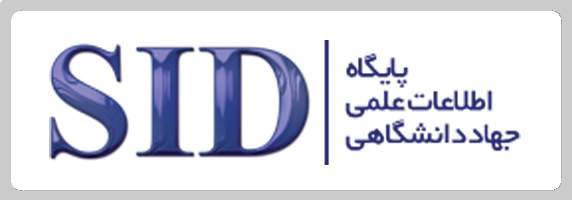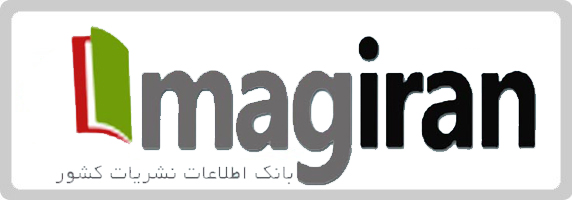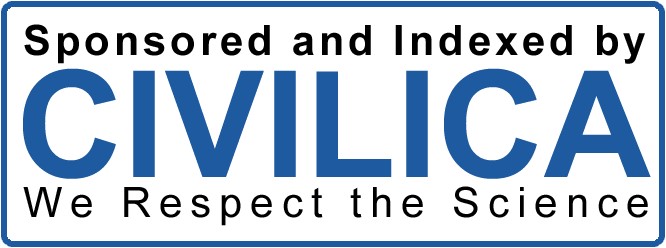اثربخشی برنامه ترکیبی مبتنی بر نظریه ذهن و روش فلورتایم بر مهارتهای اجتماعی–ارتباطی، تنظیم هیجان و انعطافپذیری رفتاری در کودکان مبتلا به اختلال طیف اوتیسم
کلمات کلیدی:
اختلال طیف اوتیسم, نظریه ذهن, روش فلورتایم, مهارتهای اجتماعی–ارتباطی, تنظیم هیجان, انعطافپذیری رفتاریچکیده
هدف پژوهش حاضر بررسی اثربخشی برنامه ترکیبی مبتنی بر نظریه ذهن و روش فلورتایم بر مهارتهای اجتماعی–ارتباطی، تنظیم هیجان و انعطافپذیری رفتاری در کودکان مبتلا به اختلال طیف اوتیسم است. این پژوهش از نوع نیمهآزمایشی با طرح تکآزمودنی بود. جامعه آماری شامل کودکان ۵ تا ۱۰ سال مبتلا به اختلال طیف اوتیسم مراجعهکننده به مرکز آوای اوتیسم مشهد بود. نمونه شامل چهار کودک بود که به روش نمونهگیری هدفمند انتخاب شدند. ابزارهای گردآوری داده شامل پرسشنامه گیلیام (GARS-2)، نیمرخ مهارتهای اجتماعی اوتیسم و سیاهه تنظیم هیجان بود. برنامه مداخله در ۱۲ جلسه فردی با ترکیب آموزش نظریه ذهن و روش فلورتایم اجرا شد و دادهها با تحلیل توصیفی، دیداری، شاخص اندازه اثر و درصد دادههای غیرهمپوش (PND) بررسی گردید نتایج نشان داد که برنامه ترکیبی منجر به بهبود معنادار در هر سه متغیر شد. میزان بهبودی مهارتهای اجتماعی–ارتباطی بین 14.30% تا 20.43%، تنظیم هیجان بین 17.95% تا 23.80% و انعطافپذیری رفتاری بین 15.85% تا 21.05% گزارش شد. شاخصهای اندازه اثر و PND نشاندهنده اثربخشی متوسط تا خوب مداخله بودند و روند نزولی مشکلات در مرحله پیگیری نیز پایدار باقی ماند. برنامه ترکیبی مبتنی بر نظریه ذهن و روش فلورتایم میتواند بهعنوان یک رویکرد کارآمد برای بهبود مهارتهای اجتماعی–ارتباطی، ارتقای تنظیم هیجان و افزایش انعطافپذیری رفتاری کودکان مبتلا به اوتیسم مورد استفاده قرار گیرد. این مداخله چندوجهی از طریق ترکیب ابعاد شناختی، هیجانی و تعاملی میتواند الگوی مناسبی برای مداخلات توانبخشی ارائه دهد.
دانلودها
مراجع
Ahmadi, S. J., Arab Bafarani, H., Hamtian, M., & Khalili, Z. (2022). Effectiveness of role play and applied behavior analysis: Increasing social behaviors in autistic children. Journal of Behavioral Science Research, 12(3), 2-19. https://cbs.ui.ac.ir/article_17282.html?lang=fa
Ashman, R., Banks, K., Philip, R. C., Walley, R., & Stanfield, A. C. (2017). A pilot randomised controlled trial of a group based social skills intervention for adults with autism spectrum disorder. Research in Autism Spectrum Disorders, 43, 67-75. https://doi.org/10.1016/j.rasd.2017.08.001
Azizi, M. P., Afrooz, G. M., Hassanzadeh, S., Ghobari Benab, B., & Arjamandnia, A. (2015). Designing a pre-communication skills training program and evaluating its effectiveness on improving social skills in high-functioning autistic children. Empowerment Quarterly, 96, 24-36. https://www.ceciranj.ir/article_66319_en.html?lang=en
Babaei, F., Abdollahi, M., Amini Gilvani, M., & Masoomifard, M. (2024). The Mediating Role of Theory of Mind in the Relationship Between Executive Functions and Marital Burnout Using Structural Equation Modeling and Artificial Neural Networks (SEM-ANN). International Journal of Education and Cognitive Sciences, 5(4), 62-73. https://doi.org/10.61838/kman.ijecs.5.4.7
Bebko, J. M., Zapparoli, B. L., & Stevenson, R. A. (2020). A pupillometry study of multisensory social and linguistic processing in autism and typical development. Developmental Psychology, 56(11), 2080. https://doi.org/10.1037/dev0001090
Bordini, D., Moya, A. C., Asevedo, G. R. D. C., Paula, C. S., Brunoni, D., Brentani, H., & Bagaiolo, L. (2024). Exploring the Acquisition of Social Communication Skills in Children with Autism: Preliminary Findings from Applied Behavior Analysis (ABA), Parent Training, and Video Modeling. Brain Sciences, 14(2), 172. https://doi.org/10.3390/brainsci14020172
Eren, B. (2015). The use of music interventions to improve social skills in adolescents with autism spectrum disorders in integrated group music therapy sessions. Procedia-Social and Behavioral Sciences, 197, 207-213. https://doi.org/10.1016/j.sbspro.2015.07.125
Ghanadzade, M., Waltz, M., & Ragi, T. (2018). The intervention priorities of parents of children with autism spectrum disorders in Iran. Research in Autism Spectrum Disorders, 55, 14-24. https://doi.org/10.1016/j.rasd.2018.08.002
Giambona, P. J., Ding, Y., Cho, S.-J., Zhang, C., & Shen, Y. (2023). Parent Perceptions of the Effects of Early Intensive Behavioral Interventions for Children With Autism. Behavioral Sciences, 13(1), 45. https://doi.org/10.3390/bs13010045
Hellendoorn, A., Langstraat, I., Wijnroks, L., Buitelaar, J. K., van Daalen, E., & Leseman, P. P. (2014). The relationship between atypical visual processing and social skills in young children with autism. Research in Developmental Disabilities, 35(2), 423-428. https://doi.org/10.1016/j.ridd.2013.11.012
Hillman, H. (2018). Child-centered play therapy as an intervention for children with autism: A literature review. International Journal of Play Therapy, 27(4), 198. https://doi.org/10.1037/pla0000083
Karna, W., & Stefaniuk, I. (2024). The Influence of Peer Relationships on the Social Development of Children with Autism Spectrum Disorder. Iranian Journal of Neurodevelopmental Disorders, 2(4), 10-18. https://doi.org/10.61838/kman.jndd.2.4.2
Martini, R., & Dionne, M. (2018). Strengthening the focus of autistic children with an environmental psychology approach. Creative City Design, 1(2), 15-19. http://oiccpress.com/crcd/article/view/7596
Masi, A., Azim, S. I., Khan, F., Karlov, L., & Eapen, V. (2022). Dissemination of Early Intervention Program for Preschool Children on the Autism Spectrum into Community Settings: An Evaluation. International journal of environmental research and public health, 19(5), 2555. https://doi.org/10.3390/ijerph19052555
Mazzone, S., & Nader-Grosbois, N. (2017). How are parental reactions to children's emotions linked with Theory of Mind in children with Autism Spectrum Disorder? Research in Autism Spectrum Disorders, 40, 41-53. https://doi.org/10.1016/j.rasd.2017.05.003
Nejati, V. (2023). Remediation of Theory of Mind in Children With Autism Spectrum Disorders: Effectiveness and Transferability of Training Effects to Behavioral Symptoms. Clinical Child Psychology and Psychiatry, 29(1), 259-273. https://doi.org/10.1177/13591045231208580
Park, H. I., Park, H. Y., Yoo, E.-Y., & Han, A. (2020). Impact of Family-Centered Early Intervention in Infants With Autism Spectrum Disorder: A Single-Subject Design. Occupational Therapy International. https://doi.org/10.1155/2020/1427169
Pasco, G. (2018). The value of early intervention for children with autism. Paediatrics and Child Health, 28(8), 364-367. https://doi.org/10.1016/j.paed.2018.06.001
Rabiei, F., Ehteshamzadeh, P., Homaei, R., & Jayervand, H. (2024). Effectiveness of Play Therapy Based on Sensory Integration on Communication Skills, Social Interaction, Stereotyped Behaviors, and Motor Development in Boys with Autism Spectrum Disorder. J Child Ment Health, 10(4), 93-108. https://doi.org/10.61186/jcmh.10.4.8
Schroeder, K., Durrleman, S., Çokal, D., Delgado, A. S., Marin, A. M., & Hinzen, W. (2021). Relations between intentionality, theory of mind and complex syntax in autism spectrum conditions and typical development. Cognitive Development, 59, 101071. https://doi.org/10.1016/j.cogdev.2021.101071
Sharma, S. R., Gonda, X., & Tarazi, F. I. (2018). Autism spectrum disorder: Classification, diagnosis and therapy. Pharmacology & Therapeutics, 190, 91-104. https://doi.org/10.1016/j.pharmthera.2018.05.007
Shi, Z. M., Lin, G. H., & Xie, Q. (2016). Effects of music therapy on mood, language, behavior, and social skills in children with autism: A meta-analysis. Chinese Nursing Research, 3(3), 137-141. https://doi.org/10.1016/j.cnre.2016.06.018
Van Herwegen, J., Smith, T. J., & Dimitriou, D. (2015). Exploring different explanations for performance on a theory of mind task in Williams syndrome and autism using eye movements. Research in Developmental Disabilities, 45, 202-209. https://doi.org/10.1016/j.ridd.2015.07.024
Vivanti, G., Bent, C. A., Capes, K., Upson, S., Hudry, K., Dissanayake, C., & Team, T. V. A. (2022). Characteristics of Children on the Autism Spectrum Who Benefit the Most From Receiving Intervention in Inclusive Versus Specialised Early Childhood Education Settings. Autism Research, 15(11), 2200-2209. https://doi.org/10.1002/aur.2815
Wen, L., & Wu, Z. (2025). The impact of sensory integration based sports training on motor and social skill development in children with autism spectrum disorder. Sci Rep, 15(1), 19974. https://doi.org/10.1038/s41598-025-05393-3
دانلود
چاپ شده
ارسال
بازنگری
پذیرش
شماره
نوع مقاله
مجوز
حق نشر 2025 فاطمه تقاضایی اول (نویسنده مسئول); محمدرضا خدابخش (نویسنده)

این پروژه تحت مجوز بین المللی Creative Commons Attribution-NonCommercial 4.0 می باشد.





